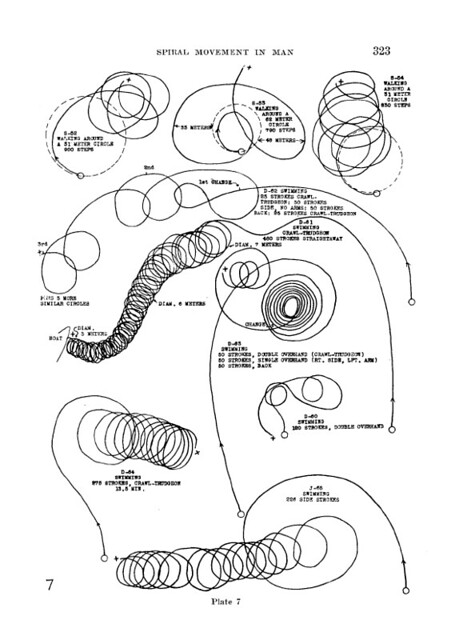
Blindfolded persons walk, run, swim, row, and drive automobiles in clock-spring spiral paths of greater or less regularity when attempting a straightaway. The spirals turn either right or left in one and the same individual, and may do so even in one experiment. But either right or left turns predominate in the great majority of individuals, often to a high degree. The paths show marked individuality, and there is some ground for thinking there exists a correlation between temperamental differences and general character of path.
The mechanism which produces the spiral path is not located in the locomotor organs, but in the central nervous system and is probably identical essentially with the spiral mechanism in other motile organisms, all of which move in spiral paths when there are no guiding senses to direct the path. The clock-spring spiral in man is interpreted as the expression in two dimensions of space of a helical spiral mechanism which seems to exist in all motile organisms moving in three dimensions of space and in amebas which move in two dimensions. In a large number of lower organisms the number of body lengths per spiral turn is almost constant, being about 4.5. The smallest regular swimming spirals in man are very close to this value, but the smallest regular walking spirals are somewhat larger. The fundamental spiral mechanism seems to be of molecular dimensions, and there seems to exist a demonstrable locomotor bilateral asymmetry in very nearly, if not quite, all organisms.
(via https://www.flickr.com/photos/pluriverse/)
Geen opmerkingen:
Een reactie posten